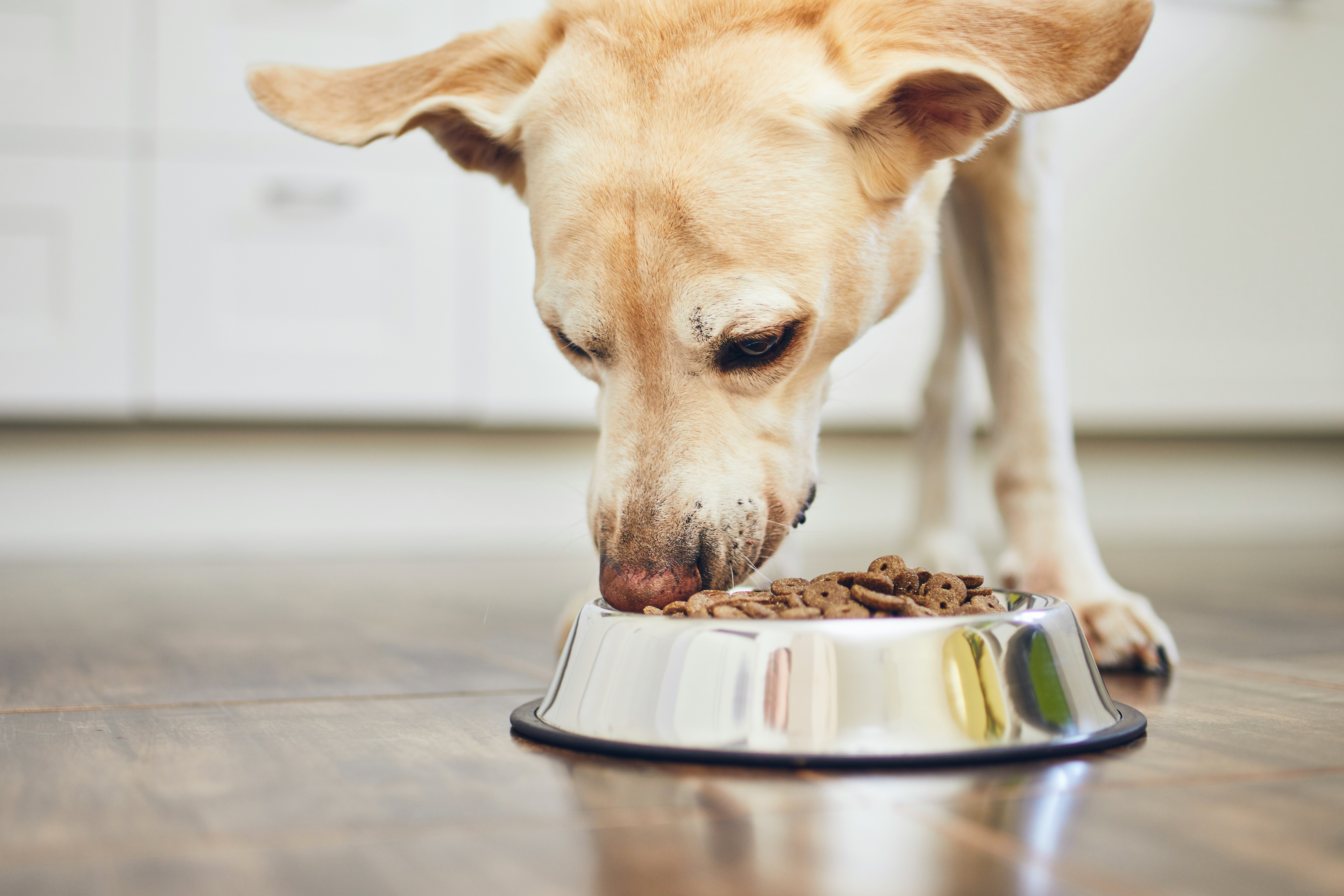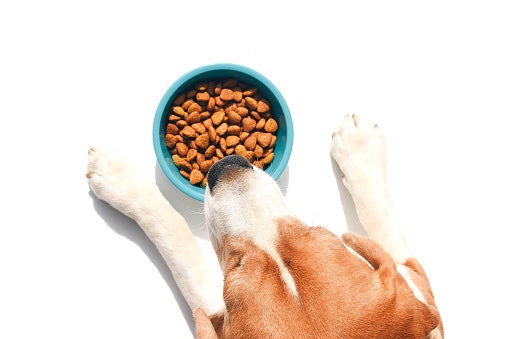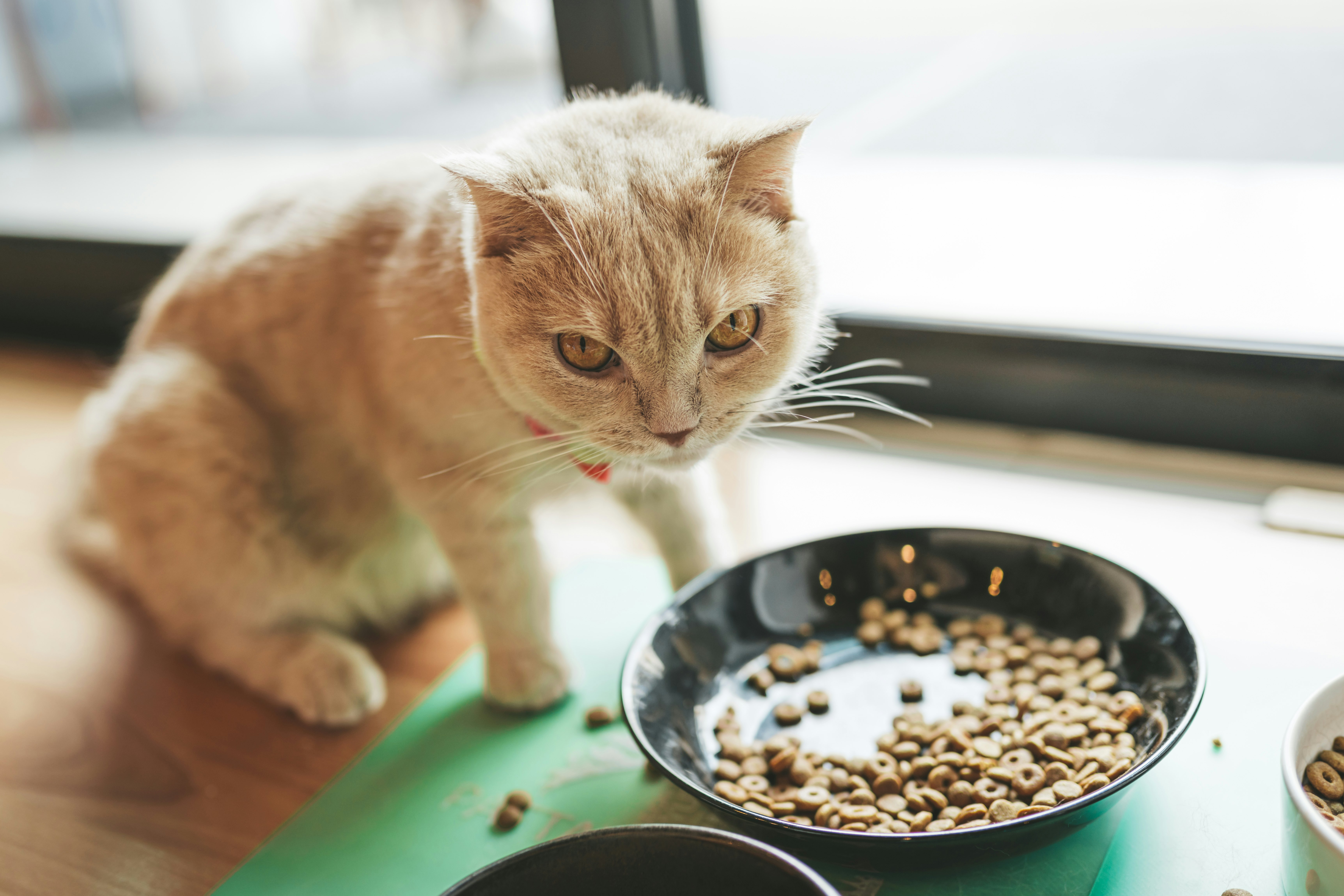
Feeding your pet a nutritious meal and minimizing harm to the environment isn’t an easy balance o strike.
A 2021 Vox article detailed how pet food poses a serious sustainability problem, chiefly through the factory farming of beef and other animal proteins that make up the diet of cats and dogs.
A new Scientific Reports study says there may be a way to feed animals a diet that’s potentially healthy for them and the planet — but some experts raise concerns about whether such a diet can support all pets.
What they found — The researchers reviewed more than 900 pet foods, including roughly 600 dog and 300 cat foods. The study occurred in Brazil, among the top three countries with the highest cat and dog populations (the U.S. and China round out the top three).
The researchers analyzed the environmental footprint — or “pawprint” — of different pet diets, such as commercial dry food, wet food, or homemade. The scientists then calculated the environmental impact of each diet depending on the amount and types of nutrients in the product.
Nutrients include protein — from animals and plants — fat, and other additives. The researchers look at greenhouse gas emissions — a key contributor to global warming — and the land used to grow vegetables or raise the animals that wind up in the pet food products.
According to the findings, wet food has the highest environmental cost of all diets for cats and dogs. Conversely, dry food had the lowest environmental cost of all the diets. Homemade meals fell somewhere in between the two. Ultimately, a 22-pound dog eating 534 calories a day of dry food would be responsible for 828.37 kilograms of carbon dioxide annually. But a similarly sized dog eating a wet diet is responsible for a hefty 6,541 kilograms of carbon dioxide.
The reason wet food is less sustainable than dry is due to the higher nutrient content. Wet foods provided nearly twice as much energy from animal products compared to dry foods, and animal-based products tend to be higher in greenhouse emissions.
“Dry food contains more plant proteins and has higher carbohydrates than canned foods, which is why it has a lesser impact on the environment,” Molly DeVoss, a certified feline training and behavior specialist who runs Cat Behavior Solutions, tells Inverse.
Can a dog handle a dry-food-only diet?

The study doesn’t recommend a specific diet, but eco-conscious owners may be tempted by dry-food only.
Some veterinarians told Inverse that dry food is generally okay for healthy pets.
“Yes, it is safe to feed pets an all dry-food diet, but the good news is that either type of pet food can provide your animal with the complete nutrition they need to grow and be happy,” Evan Antin, a veterinarian affiliated with pet food company Blue Buffalo, tells Inverse.
Sarah Wooten, a veterinary expert for Pumpkin Pet Insurance, says to look for food certified by the Association of American Feed Control Officials.
“A dry food-only diet may be convenient, and I always find myself supplementing or adding natural foods to my dog's diet outside of feeding dry food,” Leigh Siegfried, founder of the research-based dog training company Opportunity Barks, tells Inverse.
Also, cats and dogs with pre-existing health conditions may not tolerate dry food.
“If your dog has dental problems, like inflamed gums, broken teeth, or missing teeth, they might have a problem with dry food,” Wooten says.
Chronic kidney disease could make dry food hard for some older cats to digest, Antin says, due to problems with retaining water and constipation.
Pets with digestive issues typically have a hard time with both canned and wet food, so the level of fat and fiber in their diet — wet or dry — needs to be balanced. Some pets may tolerate dry food better over all.
“Because kibble is more highly processed than canned food, pets with digestive issues often tolerate dry food better than canned food,” Wooten adds.
Can a cat eat a dry-food-only diet?

A dry food diet may be fine for most dogs since canines are omnivores that could even potentially handle a vegan diet, but it may be unhealthy for most cats, which are obligate carnivores and can require the higher animal protein in wet food.
“Can a cat survive on a dry food-only diet? Yes. Can a cat thrive on a dry food-only diet? No,” DeVoss says.
DeVoss’ reasoning is two-fold. First: dry food contains only between five to ten percent moisture, whereas a cat’s natural prey would contain 75 percent moisture. Eating a dry food-only diet could lead to dehydration and potentially urinary tract diseases, including fatal urethral obstructions.
“Cats on canned food diets consume twice the amount of water when compared to cats on dry food diets,” DeVoss says, adding cats have evolved with a low thirst drive and “can’t possibly drink enough water to make up for what it is lacking in a dry food-only diet.”
Second: the higher carbohydrate content in dry-food-only diets can wreak havoc on cats’ blood sugar, making them more prone to diabetes.
“A cat’s liver is designed for the metabolism of proteins instead of carbohydrates,” DeVoss explains.
“Feeding them some canned food along with dry food is a nice way to boost their moisture and protein intake,” Wooten says.
Ultimately, whether you can choose a dry food-only diet or not depends on the needs of your pet. Speak with a veterinarian for advice.
Why the study matters — The study suggests the average dog food diet equals roughly 12.4 to 97.8 percent of the average greenhouse gas emissions from a Brazilian citizen, depending on whether the dog’s diet comprises dry or wet food.
The researchers extrapolated this number to calculate the emissions impact of all 52 million dogs in Brazil, finding they account for between 2.9 to 24.6 percent of all of Brazil’s annual emissions.
What’s next – Finding a balance between nutritious meals and low environmental impact is tricky but not impossible, according to the study.
The study authors say pet food manufacturers can reduce the environmental effects of cat and dog food. One option is swapping out high-emissions animal proteins in diets — like beef — with lower-emissions animal proteins like insects.
Another option is simply reducing the number of excessive nutrients in diets that may contribute to higher greenhouse gas emissions. The paper states all diets provided “more protein and fat than recommended,” though these excessive nutrients are sometimes added to help make the diets more palatable to pets.
“These results bring to light the importance of the role of pet food in the discussion of sustainability,” the study authors write.







